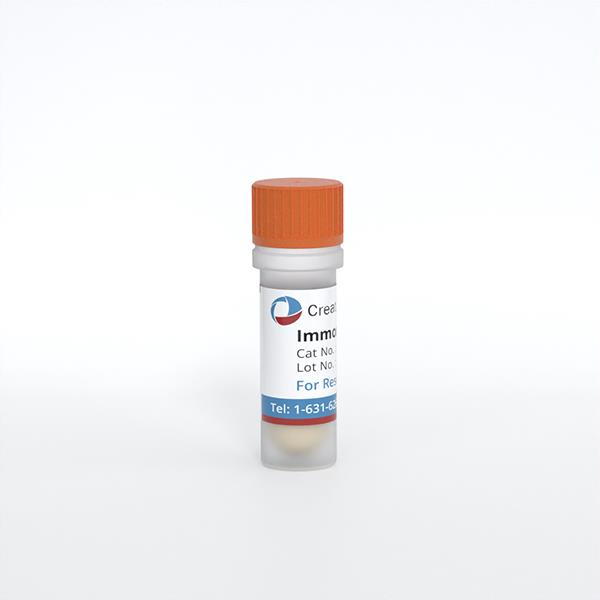
Immortalized Mouse Retinal Pigmented Epithelial Cells-HPV16 E6/E7
Cat.No.: CSC-I9014L
Species: Mus musculus, C57B1/6
Source: Retina
Morphology: Cobblestone-like
Culture Properties: Adherent
- Specification
- Q & A
- Customer Review
Cat.No.
CSC-I9014L
Description
The Immortalized Mouse Retinal Pigmented Epithelial Cells- HPV E6/E7, derived from healthy C57B1/6 mouse RPE cells, is a cell line that retained many of theirin vivophenotypic characteristics. RPE-specific markers such as RPE65 and cellular retinaldehyde binding protein (CRALBP), as well as epithelial markers ZO1, cytokeratin 8 and 18 are expressed in the Immortalized Mouse Retinal Pigmented Epithelial Cells- HPV E6/E7. These cells are useful in studies of RPE cell biology and investigation of ocular disease including age related macular degeneration (AMD).
Species
Mus musculus, C57B1/6
Source
Retina
Culture Properties
Adherent
Morphology
Cobblestone-like
Immortalization Method
Serial passaging and transduction with retrovirus carrying human papiloma virus 16 E6/E7
Markers
1. RPE65 and CRALBP (Differentiated RPE)
2. ZO1, Cytokeratin -8 and -18 (Epithelial cell marker)
2. ZO1, Cytokeratin -8 and -18 (Epithelial cell marker)
Application
For Research Use Only
Storage
Directly and immediately transfer cells from dry ice to liquid nitrogen upon receiving and keep the cells in liquid nitrogen until cell culture needed for experiments.
Note: Never can cells be kept at -20 °C.
Note: Never can cells be kept at -20 °C.
Shipping
Dry Ice.
Recommended Products
CIK-HT018 HT® Lenti-HPV-16 E6/E7 Immortalization Kit
Quality Control
1. Western Blot was used to verify the HPV protein expression in the immortalized cell line.
2. Western blot and real-time RT-PCR was used to confirm the presence of in vivo RPE markers such as RPE65 and CRALBP.
3. Immunofluorescence staining was used to confirm expression of epithelial cell markers ZO1, cytokeratin 8 and cytokeratin 18.
4. Absence of neural cell marker, SV2, PKCα, rhodopsin
2. Western blot and real-time RT-PCR was used to confirm the presence of in vivo RPE markers such as RPE65 and CRALBP.
3. Immunofluorescence staining was used to confirm expression of epithelial cell markers ZO1, cytokeratin 8 and cytokeratin 18.
4. Absence of neural cell marker, SV2, PKCα, rhodopsin
BioSafety Level
II
Citation Guidance
If you use this products in your scientific publication, it should be cited in the publication as: Creative Bioarray cat no.
If your paper has been published, please click here
to submit the PubMed ID of your paper to get a coupon.
Ask a Question
Write your own review
Related Products
Featured Products
- Adipose Tissue-Derived Stem Cells
- Human Neurons
- Mouse Probe
- Whole Chromosome Painting Probes
- Hepatic Cells
- Renal Cells
- In Vitro ADME Kits
- Tissue Microarray
- Tissue Blocks
- Tissue Sections
- FFPE Cell Pellet
- Probe
- Centromere Probes
- Telomere Probes
- Satellite Enumeration Probes
- Subtelomere Specific Probes
- Bacterial Probes
- ISH/FISH Probes
- Exosome Isolation Kit
- Human Adult Stem Cells
- Mouse Stem Cells
- iPSCs
- Mouse Embryonic Stem Cells
- iPSC Differentiation Kits
- Mesenchymal Stem Cells
- Immortalized Human Cells
- Immortalized Murine Cells
- Cell Immortalization Kit
- Adipose Cells
- Cardiac Cells
- Dermal Cells
- Epidermal Cells
- Peripheral Blood Mononuclear Cells
- Umbilical Cord Cells
- Monkey Primary Cells
- Mouse Primary Cells
- Breast Tumor Cells
- Colorectal Tumor Cells
- Esophageal Tumor Cells
- Lung Tumor Cells
- Leukemia/Lymphoma/Myeloma Cells
- Ovarian Tumor Cells
- Pancreatic Tumor Cells
- Mouse Tumor Cells
Hot Products
